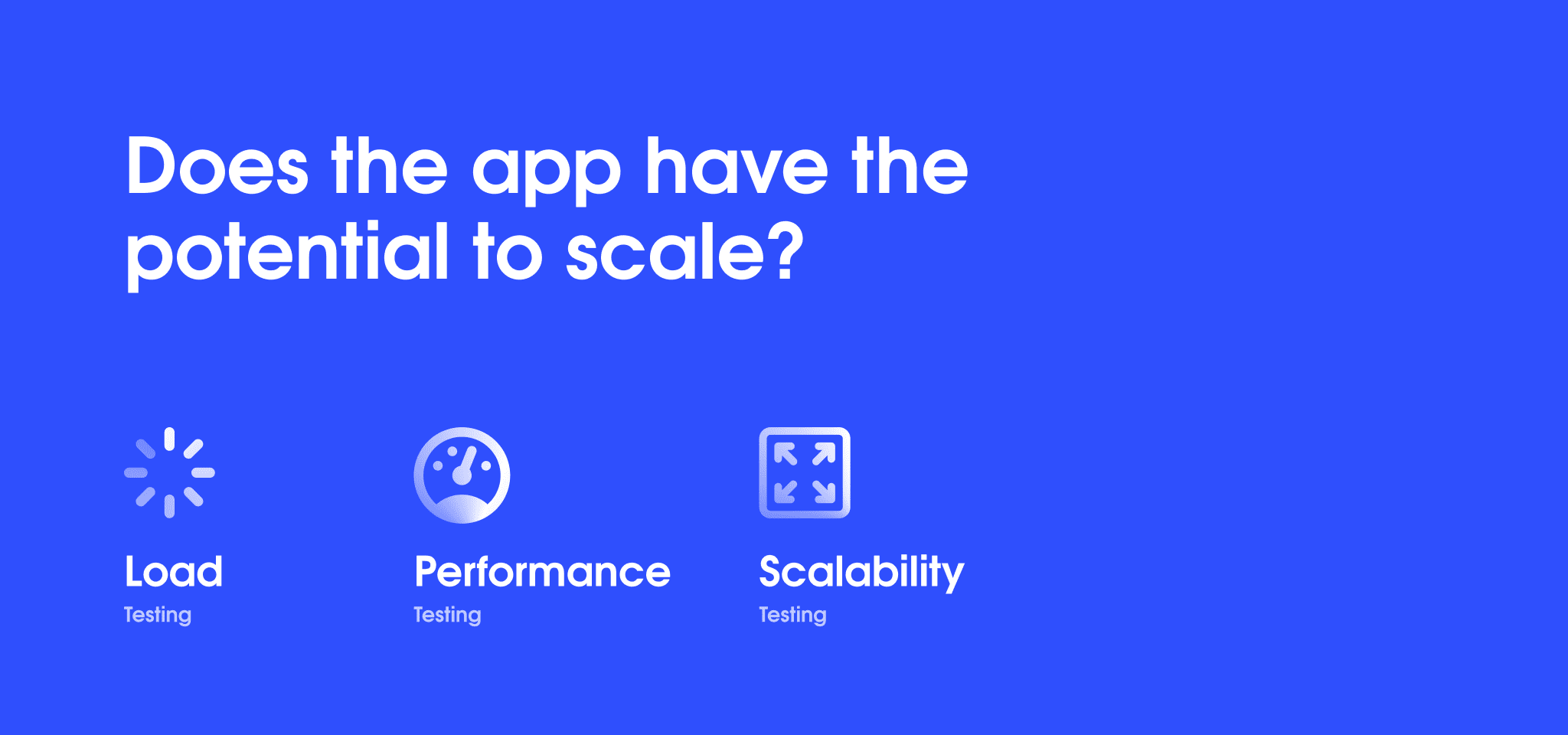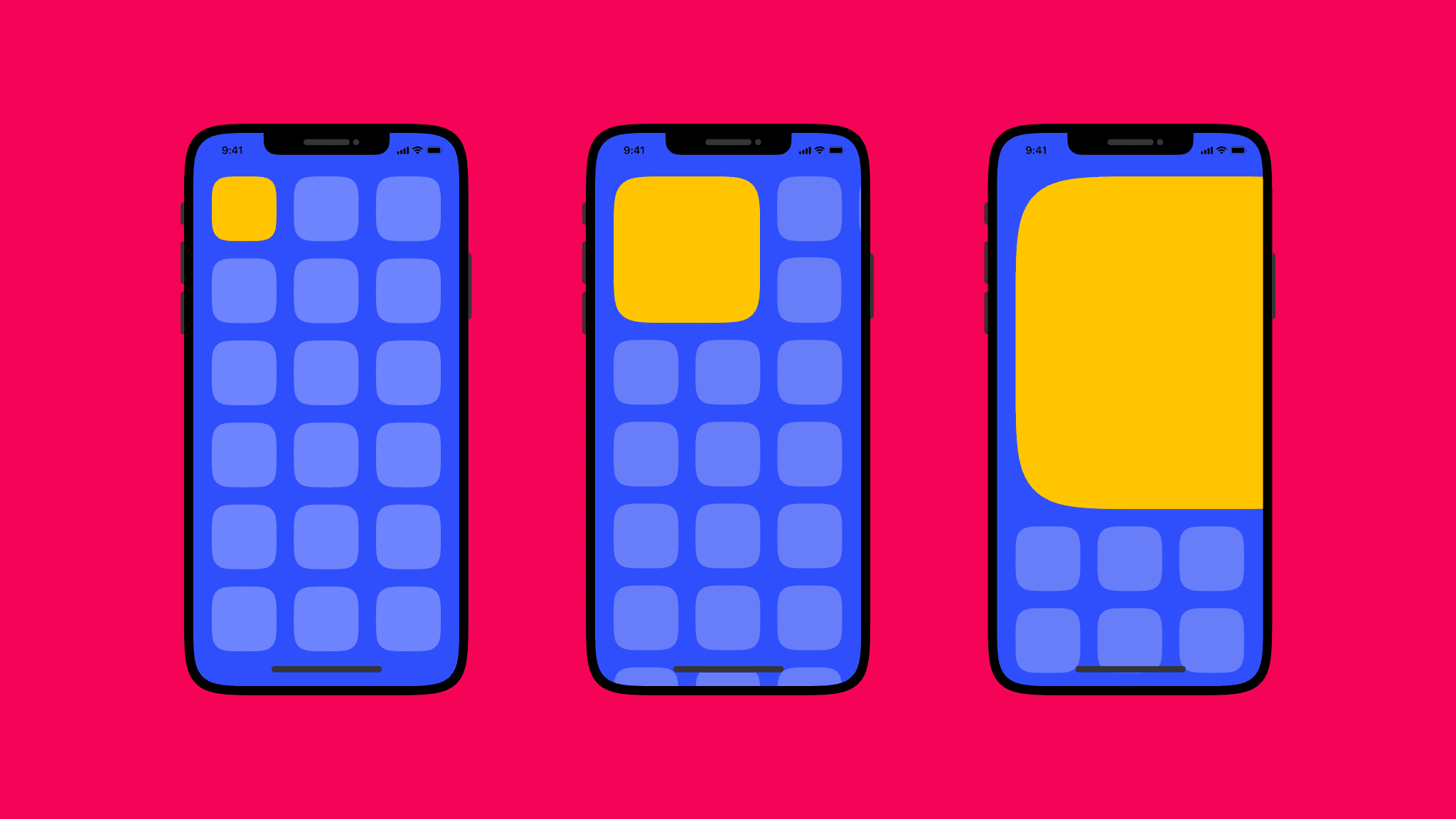Why are scalable applications so popular these days? What is the application scalability everyone is passionate about? And what can Moqod offer to your business? Dive into this article to learn more about scalable architecture and Moqod’s application scalability techniques.

What is application scalability?
Basically, scalability is an application's ability to handle more customers or users than at the beginning of its work. Scalability is one of the most crucial factors when it comes to mobile app development because that’s exactly what provides your users with a good user experience when they double or even triple. Scalability is responsible for handling the traffic, responding accurately, and reacting to the growing number of requests.
When you create an incredible application, the last thing you want from it is to flop and lose your users on the way. Unfortunately, it might happen when an application’s user base grows too fast. If your web application’s architecture wasn’t designed for seamlessly handling explosive growth, its hardware infrastructure might collapse.
Why is scalability so important?
The answer is simple: it can help you avoid crashes, bugs, errors, and outages, boost loading speeds, reduce update costs, time included, and even improve customer loyalty. In other words, when you start the app development process, mark scalability as one of your main priorities.
Of course, you need to remember that scalability can’t save your app if you don’t have any of the following principles:
- Efficiency
Failure will be the only option if the system you’re working on cannot cope with all the loads and perform functions and tasks in every condition. - Fewer dependencies
Remember: if you are making some changes, they aren’t supposed to affect the code crucially. Also, it is essential to expand the software's functionality, using assets you have already created to improve code reusability. - Testability
Testing is supposed to be easy, so you can find bugs and fix them effortlessly.
What is scalability testing, by the way?
There are different ways to check whether an application has the potential to scale.

Load testing is the process of purposely putting multiple requests to measure your application's response. You will see how an application responds when many users try to access it simultaneously.
To optimize resource consumption, performance testing analyzes an application’s operational performance, such as speed, stability, reliability, and other data, to optimize resource consumption.
Scalability testing aims to measure how much you can be scaled up your app. You will find the breaking point when it is no longer possible for an application to grow proportionally to increasing demand and requirements.
If you don’t want to bother with all these testings and backend API frameworks that guarantee you the best results, we recommend you rely on professionals. Now let’s take a look at the data scalability at Moqod.
How does the process of releasing new versions work?
We chose to release new versions based on the project size, user base, variety of platforms and devices, urgency and importance of changes made for the exact version of an app.
The process itself is pretty standard throughout the projects:
- The Moqod QA team is testing each change made to the app during a sprint;
- QA team tests in the development environment first;
- Then we use a staging environment, where the data and codebase are synced with the production environment. The team can check how new functionality and changes in the latest version will affect the current production build and how updates will install the older versions of an app.
- All data on the stage environment is anonymized and obfuscated;
- Once we have the green light from the QA team on a staging environment, we are ready to send the app into production.
- Our internal CI/CD tools and pipelines support this process.

What timelines should be considered?
From our experience, several events and workflows may affect the initial timeline:
- Designing stage. Usually, during the design flow, our designer may expect an extensive list of suggestions and additions from your product owner and other team members involved in the process. The timeline here will depend directly on the number of iterations and changes requested;
- Backend API readiness. App development is primarily dependent on the backend and API. Therefore it may become a bottleneck in the development process. Quite often, during the development process, API adjustments are inevitable. It may be caused by design changes or complexity, mobile platform nuances, etc. Timelines here will depend on blockers in team synchronization and the number of adjustments needed.
- Project pivoting. Many startups and mature businesses may pivot their software development project. New business goals may lead to the project's pivot stage, and the development team will need to reorganize their work. This will affect the initial timeline.
- Communication issues. At Moqod, we discuss and agree on the most suitable way and response time between the teams involved in the development process. We expect to have at least one contact person in charge from the client’s side to address questions and sync with other teams. Delays in communication may lead to blocked tasks and affect the initially planned timeline.
What choices are there in terms of releasing the app in multiple countries? We find the following considerations necessary for international app release: - Verify language support and localization (also UI for Arabic or Hebrew right-left text direction);
- Various time zones to consider;
- Country laws related to privacy and data handling;
- Most popular devices per country for testing the product;
- Pricing strategy;
- Cultural aspects.
How to cope with (future) multilingual options?
Moqod uses localization services to manage multilingual strings in apps. It helps us keep all text strings in one place and translate them to multiple languages. Access to Localize may be given to any translator or collaborator to edit texts. All changes are centralized and will be copy-pasted by the developers in the app releases.
What is needed to keep the app running smoothly even as many users overgrow?
The scalability of the mobile app largely depends on the backend and its architecture. There are a few layers for backend scalability (from top to bottom):
- API design. API needs to be designed to minimize server load and speed up response and up/download time.
- Application layer. Backend applications need to be built to enable fast response time and scalability.
- Hardware layer. Hardware can be scaled vertically (by increasing the number of machines or their power) or geographically (e.g., launching instances closer to users' geographic areas).
Frontend (or mobile app scalability) largely depends on the above. However, there are several principles to keep in mind when developing frontend apps:
- API design. As mentioned previously, API needs to be architected and designed to improve performance.
- Use caching where possible. Caching helps decrease mobile traffic and to speed up response time.
- Download content in proper sizes. Content like images, video, or audio needs to be optimized for mobile traffic (e.g., lower bit rate, quality, and size). This helps to increase the responsiveness of mobile apps.
- Lazy loading. Lazy loading helps only to download the content when needed. For example, instead of loading all content — only load the one currently required to be viewed by the user.
Conclusion
As you can see, we had overlooked everything for you to trust the process and not to worry about the result. The choice is yours, and we’re always here to help.






